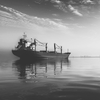The world shipbuilding industry is forecast to spend $5.3 billion on marine propulsion systems in 2004 and this is set to rise. Over the period 2004 to 2008, $27.2 billion is likely to be spent compared with $22.4 billion over the previous five year period – an increase of 21%. These are amongst the findings of the latest edition of The World Marine Propulsion Report 2004-2008, published by analysts Douglas-Westwood.
In 2004 alone, engines are likely to be installed with a total power output of 18 GW. According to the study analyst Barney Parsons, “this is the equivalent of the output of about 15 nuclear power stations”.
Shipbuilding boom
“The world shipping and shipbuilding industry is currently enjoying a strong upturn. World economic growth is buoyant and it is expected to remain strong in the medium term boosted by the very strong growth of the Chinese economy and to a lesser extent in other developing economies” said Parsons.
“World seaborne trade has increased due in part to a boom in demand for commodities such as oil & steel. The commercial shipping industry has become more profitable than during the previous decade and confidence has grown. The overall result has been a surge of orders for vessels and yards currently have full order books.
“We expect record years ahead with shipbuilding output exceeding 40 million gross tonnes in 2005 and 2006 with compensated gross tonnage (cgt) output in 2006 of 26 million.
“The total value of shipbuilding output is expected to peak at around $45 billion in each of these two years with 1,864 vessel deliveries and over 2,850 main engine installations.
Then return to trend
“It is unlikely that such high output levels can continue for long and in 2007-8 we expect a return to more normal activity levels as the new tonnage is absorbed by the market. The long-term overall growth trend is however likely to continue for the foreseeable future.
“Shipbuilding is a highly cyclical industry and this is likely to continue to be the case. Periods of high owner confidence tend to result in an excess of tonnage which takes the heat out of shipping markets until it is absorbed and the next global economic upturn triggers the next up-cycle. Discounting these cycles, the long-term picture is one of growth. This is also the case for marine propulsion.
Chinese yards
“In 1999 Chinese yards accounted for 7% of main engine installations by value. By 2008, we forecast this to grow to 13%. Korea is also expected to deliver substantially more vessels in our forecast period but due to the impact of China, will not grow its share. Japan’s output will be relatively steady. Other Asian countries are expected to improve their performance.
“Europe will continue to have a high share of the propulsion market as a result of supplying a greater proportion of high-powered multi-engined vessels.
High powered growth for LNG
“The high power requirements for container vessels mean that this vessel sector will continue to require the greatest amount of main engine power. However, the vessel sector with the strongest growth will be specialised LNG vessels. This fleet will grow considerably as the LNG business grows and the values of engines and propulsion systems installed will more than double over the next five years.”
Sponsored Content
Chris-Marine’s solutions help to prolong engine lifetime

Subscribe for
Maritime Reporter E-News
Maritime Reporter E-News is the maritime industry's largest circulation and most authoritative ENews Service, delivered to your Email five times per week









